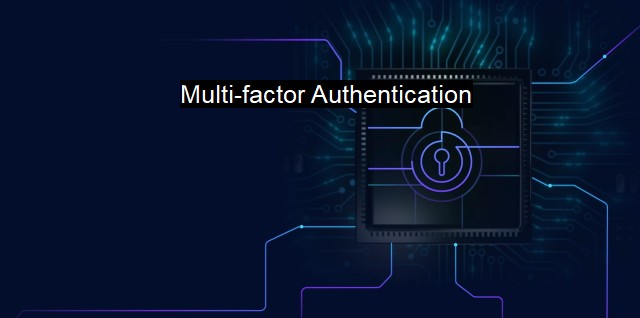What is Multi-factor Authentication?
Multi-Factor Authentication: Strengthening Cybersecurity in the Digital Age with Antivirus Protection
Multi-factor authentication (MFA) is an important component of cybersecurity and is integral to antivirus solutions. Unlike the traditional sign-on procedure where users only need a username and password, MFA adds more layers of identity verification to this process, thereby making it computationally expensive for unauthorized access attempts.The concept of multi-factor authentication rests on the premise that an effective way to enhance security is by validating a user’s identity using more than one set of credentials before allowing access. In other words, if one layer of security gets compromised, the attacker still needs to break through other contingency layers, which dramatically reduces the chance of a successful breach.
Before delving further into the mechanics of multi-factor authentication, it would be helpful to examine the various types of user credentials utilized. User credentials fall into three broad categories: knowledge factors (something the user knows), possession factors (something the user has), and inherence factors (something the user is). The most common example of a knowledge factor is a password, while keys and mobile devices stand as examples of possession factors. Inherence factors involve biometrics which could be the user's face, fingerprint, iris, voice, etc.
The different combinations of validation methods in multi-factor authentication provide different levels of security. For instance, the traditional two-factor authentication may involve the use of a password and mobile device. After entering the password, the user will receive a unique, time-sensitive code on a registered mobile device, which they must then input to gain access. This additional layer of security ensures that even if the attacker guesses or steals the password, they will be unable to access the account without the paired mobile device.
This added level of security can be beneficial in a broader context, such as protecting sensitive user data stored with internet service providers. In this case, valid log-in credentials alone wouldn't provide access. Instead, a verification code or biometric data might be required. This makes it undeniably harder for cybercriminals to obtain unauthorized access.
Multi-factor authentication can bolster antivirus initiatives. While antivirus software defends against malicious software, it may not be as equipped to tackle unauthorized access - particularly advanced threats where malware potentially could control the system without being detected. Multi-factor authentication is especially relevant in this context. Even in instances where the system has been compromised by malware, multi-factor authentication could prevent unauthorized actions, thereby minimizing the potential damage.
Modern antivirus solutions have begun incorporating multi-factor authentication protocols by implementing behavioural biometrics, such as keystroke dynamics, into their multi-layer defenses. This means even if an attacker acquires a user’s password and evades detection by the antivirus, they still need to mimic the user’s unique typing style to bypass cybersecurity.
That being said, multi-factor authentication is not without its downsides. Its implementation can lead to increased complexity in sign-in procedures and potentially alienate some users due to heightened privacy concerns. as cybersecurity threats grow more sophisticated, it has become more important for individuals and businesses to exploit the increased security multi-factor authentication provides.
Multi-factor authentication, with its multiple input layers, greatly enhances cybersecurity and complements antivirus efforts by providing robust protection against unauthorised access. Despite minor hurdles regarding user experience, the need for implementing multi-factor authentication will only continue to grow as we develop increasingly digital lifestyles.

Multi-factor Authentication FAQs
What is multi-factor authentication (MFA)?
Multi-factor authentication (MFA) is a security measure that requires users to provide multiple methods of identification before accessing an account or system. Typically, this includes a combination of something the user knows (such as a password), something the user has (such as a smart card), and something the user is (such as a fingerprint).Why is multi-factor authentication important for cybersecurity?
Multi-factor authentication is important for cybersecurity because it provides an extra layer of protection against unauthorized access. Passwords can be easily compromised through phishing attacks or social engineering, but MFA requires an additional form of verification that is much harder to fake or steal.What are some common types of multi-factor authentication?
Some common types of multi-factor authentication include physical tokens (such as smart cards or USB keys), biometric factors (such as fingerprints or facial recognition), and one-time passwords (such as SMS codes or time-based tokens).How can I implement multi-factor authentication for my antivirus software?
Many antivirus software providers offer multi-factor authentication as a built-in feature. Check with your provider to see what options are available and how to set them up. Alternatively, you can use third-party authentication tools such as Google Authenticator or Duo Security to add an extra layer of protection to your antivirus software.| | A | | | B | | | C | | | D | | | E | | | F | | | G | | | H | | | I | | | J | | | K | | | L | | | M | |
| | N | | | O | | | P | | | Q | | | R | | | S | | | T | | | U | | | V | | | W | | | X | | | Y | | | Z | |
| | 1 | | | 2 | | | 3 | | | 4 | | | 7 | | | 8 | | |||||||